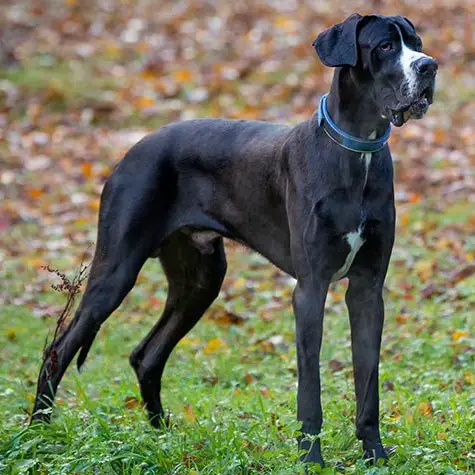Great Dane History
The Danes are a medium-sized, working, gundog breed of medium to large-sized, strong, agile, muscular dogs that are well proportioned, with males and females having a very similar appearance. The head is relatively large, yet in proportion to the body, with a lean, chiseled, rectangular muzzle. The eyes are medium-sized, oval, and brown. The ears are triangular, set high, and hang down. The tail is medium to long in length, tapering to the tip. The coat is short, smooth, and dense, without an undercoat. The Danes were developed in Germany for tracking and pointing. They are descendants of two now-extinct mastiff-type dogs, the Frankfurter and the Rottweiler, and were also influenced by the bloodhounds and the spitz-type dogs. The breed was standardized by King Frederick William IV of Prussia in 1865, and the name “Dane” was adopted by the Kennel Club in 1888. The Danes are a very popular family pet, with a large following of owners, breeders, and fanciers who participate in many types of competitions. In addition to being excellent hunters, the Danes make very good guard dogs and are exceptionally loyal.
Great Dane Physical Characteristics
The Great Dane is a very large, giant-sized dog breed that typically stands between 28 and 32 inches tall at the shoulder and weighs between 100 and 180 pounds. They have a long, muscular, slightly arched neck with a somewhat concave back, a heavy head with a straight or slightly curved nose, and large, round ears. They have a level topline, deep chest, and short, tight-fitting, glossy, dark-to-red-brown or black-tipped hair. The tail is docked to between 1 and 2 inches. The Great Dane is calm yet confident, playful, and protective. They are unsuited to life in a small city apartment and require more exercise than other large breeds.
Eye Colors
Brown
Nose Colors
Unknown
Coat Colors
Unknown
Height Range
Male Height Range: 30 – 34 inches
Female Height Range: 28 – 32 inches
Weight Range
Male Weight Range: 120 – 175 lbs
Female Weight Range: 100 – 140 lbs
Great Dane Health
Description of breed health.
Lifespan
7-10 yrs
Great Dane Health Concerns
Entropion, Gastric Torsion, Cardiomyopathy, Hip Dysplasia, Myotonia
Great Dane Temperament and Behaviour
The Great Dane is a confident, powerful and courageous breed of dog. They are independent and stubborn, so they need to be trained and socialized from a young age.
Great Dane Activity Requirements
Great Danes are a majestic, strong, and big-boned breed of dog. They can grow up to be more than 30 inches tall and weigh up to 130 pounds. These dogs are definitely not couch potatoes! While they are not known for being the most energetic of breeds, they do require regular exercise. A daily walk or jog or a game of fetch will help keep your Great Dane happy. While Great Danes do very well in homes with yards, they can also be comfortable in an apartment. They are an intelligent, loving, and loyal breed that makes a great companion.
Miles Per Day
Unknown
Activity Per Day
Unknown
Daily Food
3.5 cups
Kennel Club Recognition

American Kennel Club
Recognized by the American Kennel Club
Great Dane is part of the Working group.
Visit the American Kennel Club website.

The Kennel Club
Recognized by The Kennel Club
Great Dane is part of the Working group.
Visit the Kennel Club website.

Australian National Kennel Council
Recognized by the Australian National Kennel Council
Great Dane is part of the Non-Sporting group.
Visit the Australian National Kennel Council website.

Canadian Kennel Club
Recognized by the Canadian Kennel Club
Great Dane is part of the Working Dog group.
Visit the Canadian Kennel Club website.
